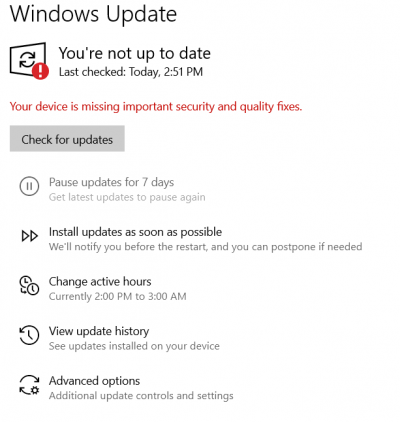nRiTeCh
Skilled
I'm at my bothers place and had to install one app from MS store but nothings happens even though store is working fine. When clicked on install no action no freeze etc.
This issue is related to windows update and windows isn't getting updated as well.
All update related services functioning fine.
Tried that "C:\Windows\System32\catroot2" renamed/backup method and services restart reboot etc. thing.
Ran troubleshooter and it wasnt able to fix anything with the below outputs:





Last windows update.. but I'm, sure its fake as just 3 months back I visited him the updates were working just fine. So updates for 2022 should definitely show.

Ran few helpful scripts from the net..

Clicking on anything in Windows update settings does nothing, just greys out that option..

"C:\Windows\SoftwareDistribution" folder is also blank with just 2 random folders.
Brother hardly uses laptop as wfh has over for him. But for me its like things shaould work as is without issues hence the query.
This issue is related to windows update and windows isn't getting updated as well.
All update related services functioning fine.
Tried that "C:\Windows\System32\catroot2" renamed/backup method and services restart reboot etc. thing.
Ran troubleshooter and it wasnt able to fix anything with the below outputs:
Last windows update.. but I'm, sure its fake as just 3 months back I visited him the updates were working just fine. So updates for 2022 should definitely show.
Ran few helpful scripts from the net..
Clicking on anything in Windows update settings does nothing, just greys out that option..
"C:\Windows\SoftwareDistribution" folder is also blank with just 2 random folders.
Brother hardly uses laptop as wfh has over for him. But for me its like things shaould work as is without issues hence the query.


